
Last month, London’s National History Museum announced the photographers who were “highly commended” in their annual Wildlife Photographer of the Year competition: a collection of stunning, and occasionally harrowing, images of nature worldwide.
Today, the winners of the competition are being crowned. Photographers from around the globe are being commended for capturing the depths of nature, from a fairy-tale-esque atmosphere in Mount Olympus, Greece to a giant sea star in Japan’s Kinko Bay. Elsewhere, the Tohorā whales of New Zealand find new life after being hunted to near extinction, and the “dying” Lake Amatitlá of Guatemala is seen contaminated by the likes of sewage and agricultural fertilisers. Categories ranged from “animal portraits” to “natural artistry”, and the corresponding images transcend these titles.
Here are a selection of the winners from this year’s cohort (warning: some of the images are disturbing).
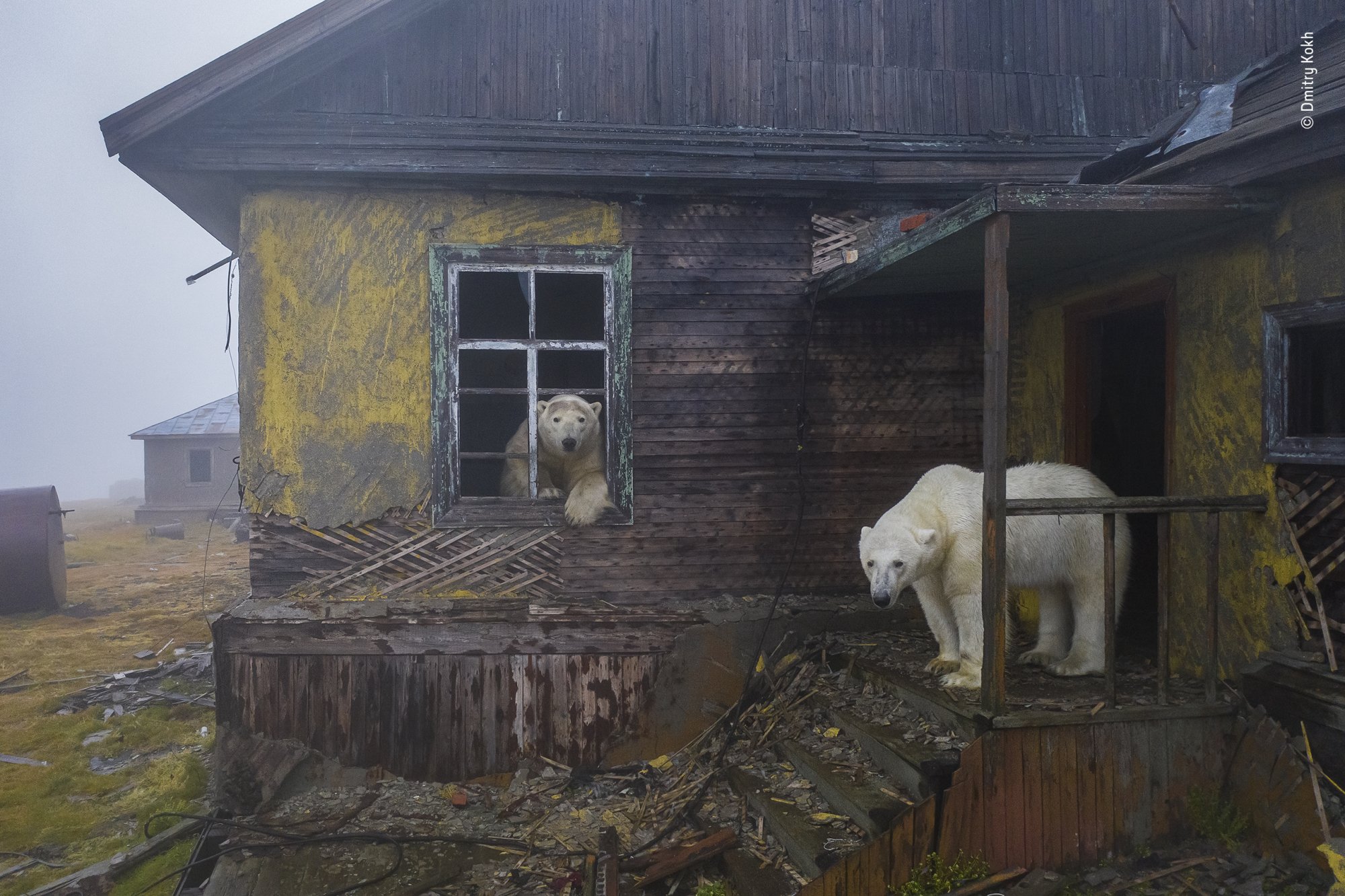
Credit: Dmitry Kokh.
This harrowing photograph captures polar bears at a deserted settlement in Kolyuchin, Russia. The photographer Dmitry Kokh spotted the bears roaming the area, as they tend to do in the Chukchi Sea region during summer months.
“As they explored every window and door, Dmitry used a low-noise drone to take a picture that conjures up a post-apocalyptic future,” reads the accompanying caption.

Credit: Brent Stirton.
A harrowing yet touching image, “Ndakasi’s passing” won the photojournalism category. Photographer Brent Stirton once captured mountain gorilla Ndakasi’s rescue 13 years ago when she was a two-month-old, after “her troop was brutally killed by a powerful charcoal mafia as a threat to park rangers”. Now, he memorialises her passing in Democratic Republic of the Congo, lying in the arms of her rescuer and caregiver, the ranger Andre Bauma.
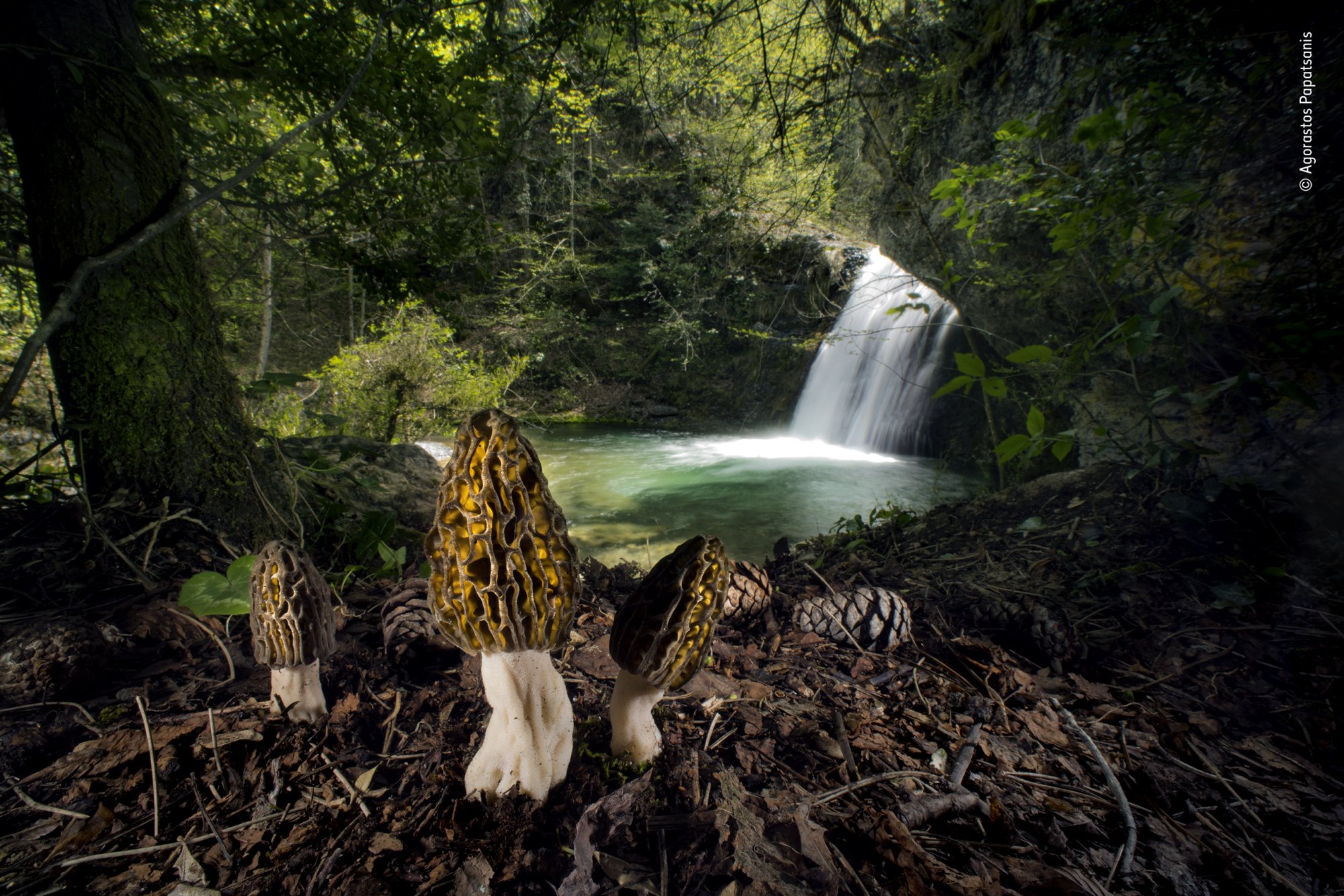
Credit: Agorastos Papatsanis.
Agorastos Papatsanis delves into the magical forest of Mount Olympus, where fungi and a flowing bed of water came together to create a storybook-like scene. The photograph won under the “Plants and Fungi” category. He waited for the right light, then “used a wide-angle lens and flashes to highlight the morels’ labyrinthine forms”.
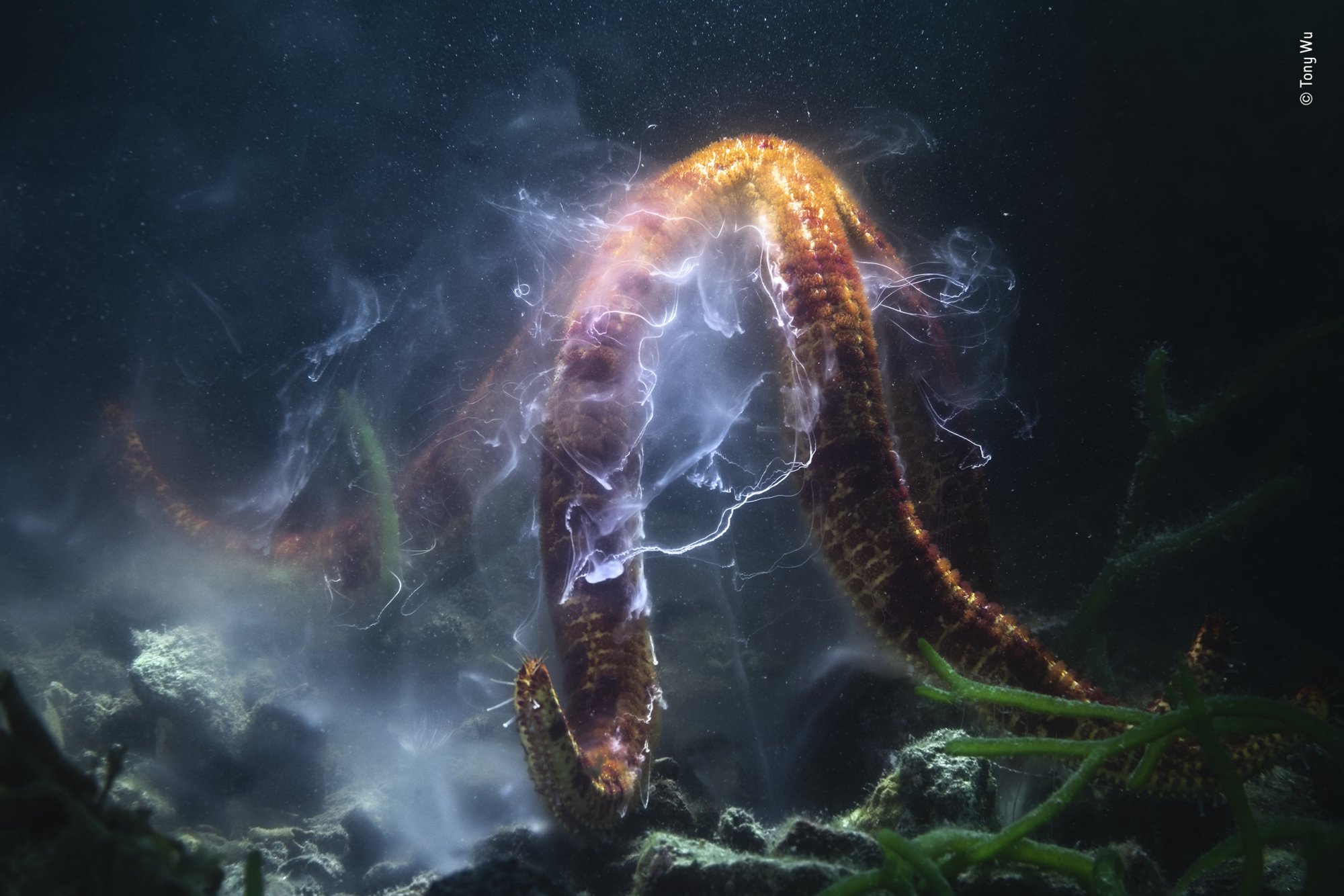
Credit: Tony Wu.
Tony Wu photographed the reproductive dance of a giant sea star, winning the competition’s “underwater” category.
“As the surrounding water filled with sperm and eggs from spawning sea stars, Tony faced several challenges,” reads the caption. “Stuck in a small, enclosed bay with only a macro lens for photographing small subjects, he backed up to squeeze the undulating sea star into his field of view”. A “galaxy-like” scene ensued.
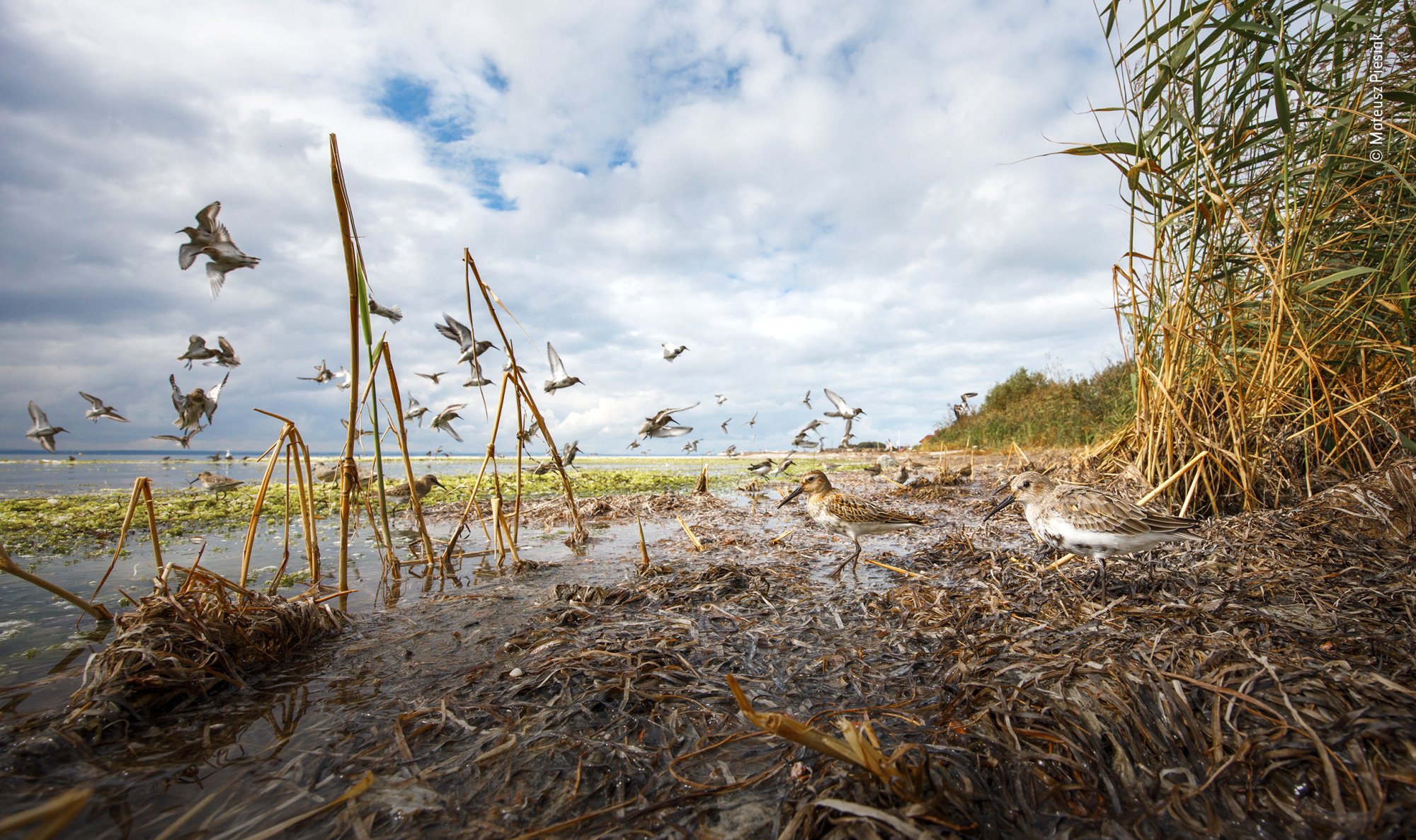
Credit: Mateusz Piesiak.
Mateusz Piesiak bagged the “Rising Star Portfolio Award” for his image of a cluster of birds in Poland. He managed to snap the exact moment “when a passing peregrine falcon caused some of the dunlins to fly up”, according to the caption.
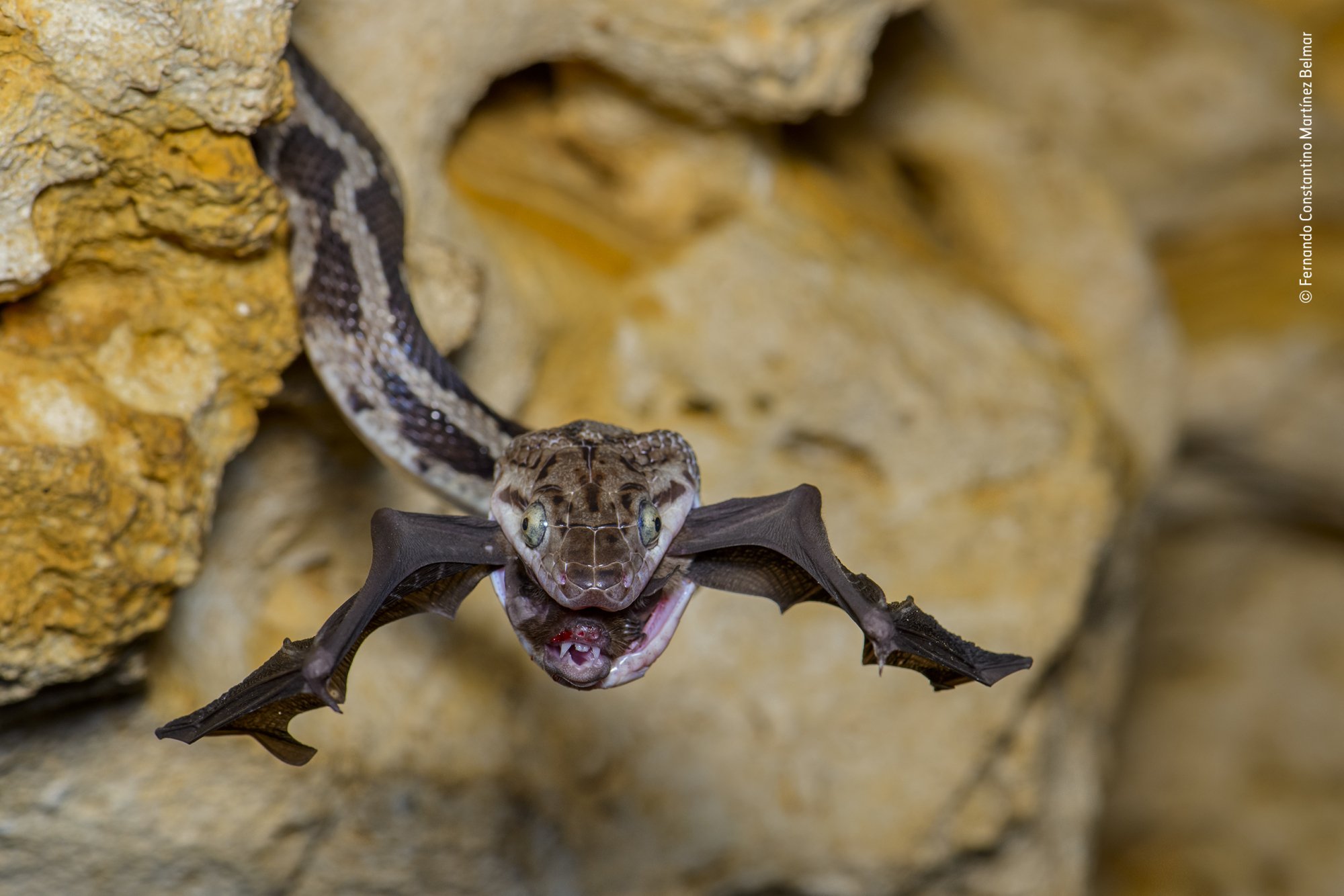
Credit: Fernando Constantino Martínez Belmar.
“Every evening at sundown in the Cave of the Hanging Snakes, thousands of bats leave for the night’s feeding,” reads the caption for Fernando Constantino Martínez Belmar’s startling image. “It is also when hungry rat snakes emerge, dangling from the roof to snatch their prey in mid-air.”
Belmar photographed a Yucatan rat snake snapping up a bat, seconds before retreating into a crevice with its prey. The image was shot in Kantemó, Mexico, where the aforementioned cave is infamous.
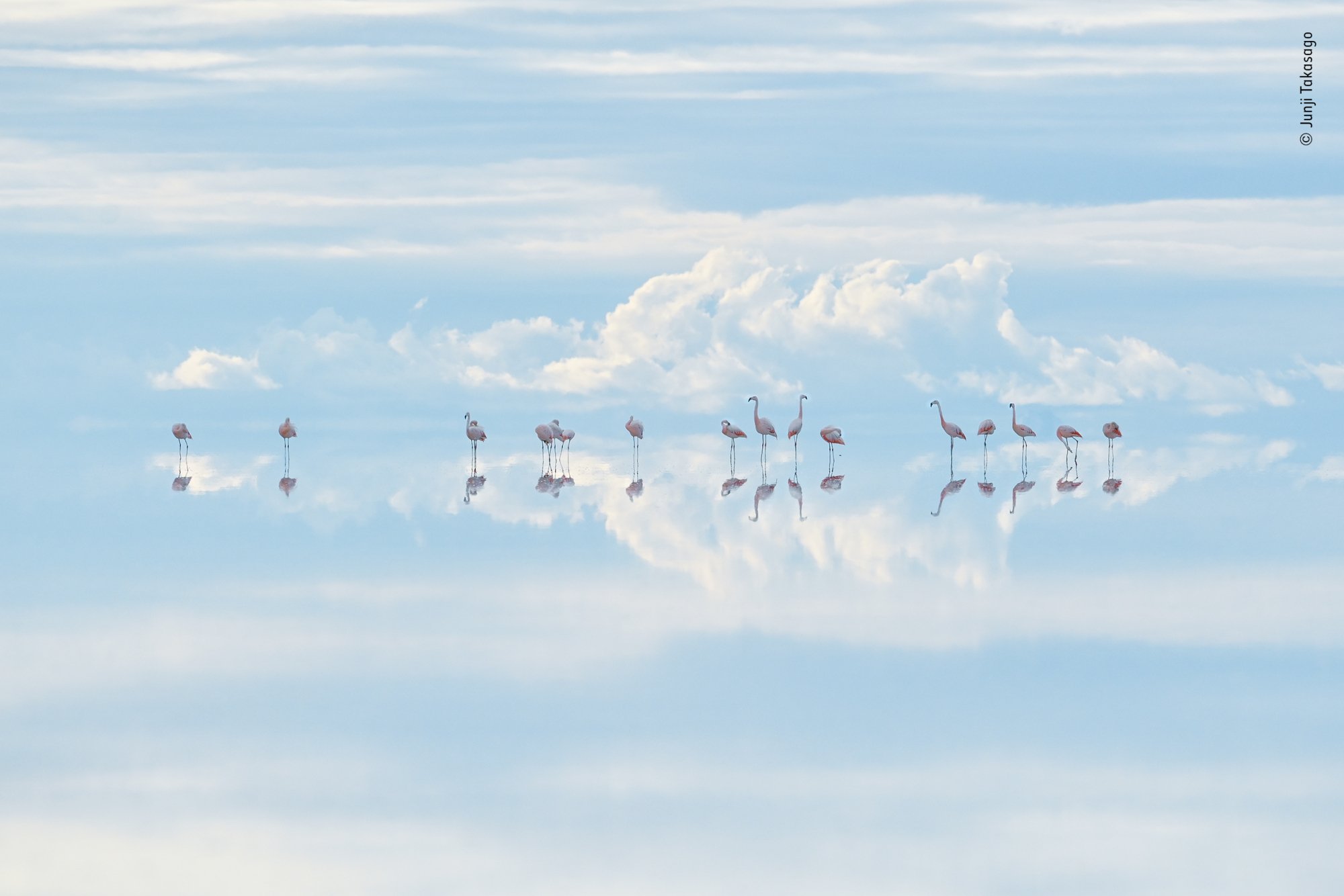
Credit: Junji Takasago
An ethereal image, “heavenly flamingos” focuses on a group of Chilean flamingos high in the Andes. Junji Takasago created the dream-like photograph in Salar de Uyuni, or the world’s largest salt flat, located in Bolivia.
“Framing their choreography within the reflected clouds, he fought back his altitude sickness to capture this dream-like scene,” the description explains. Takasago won the “natural artistry” category for this one.
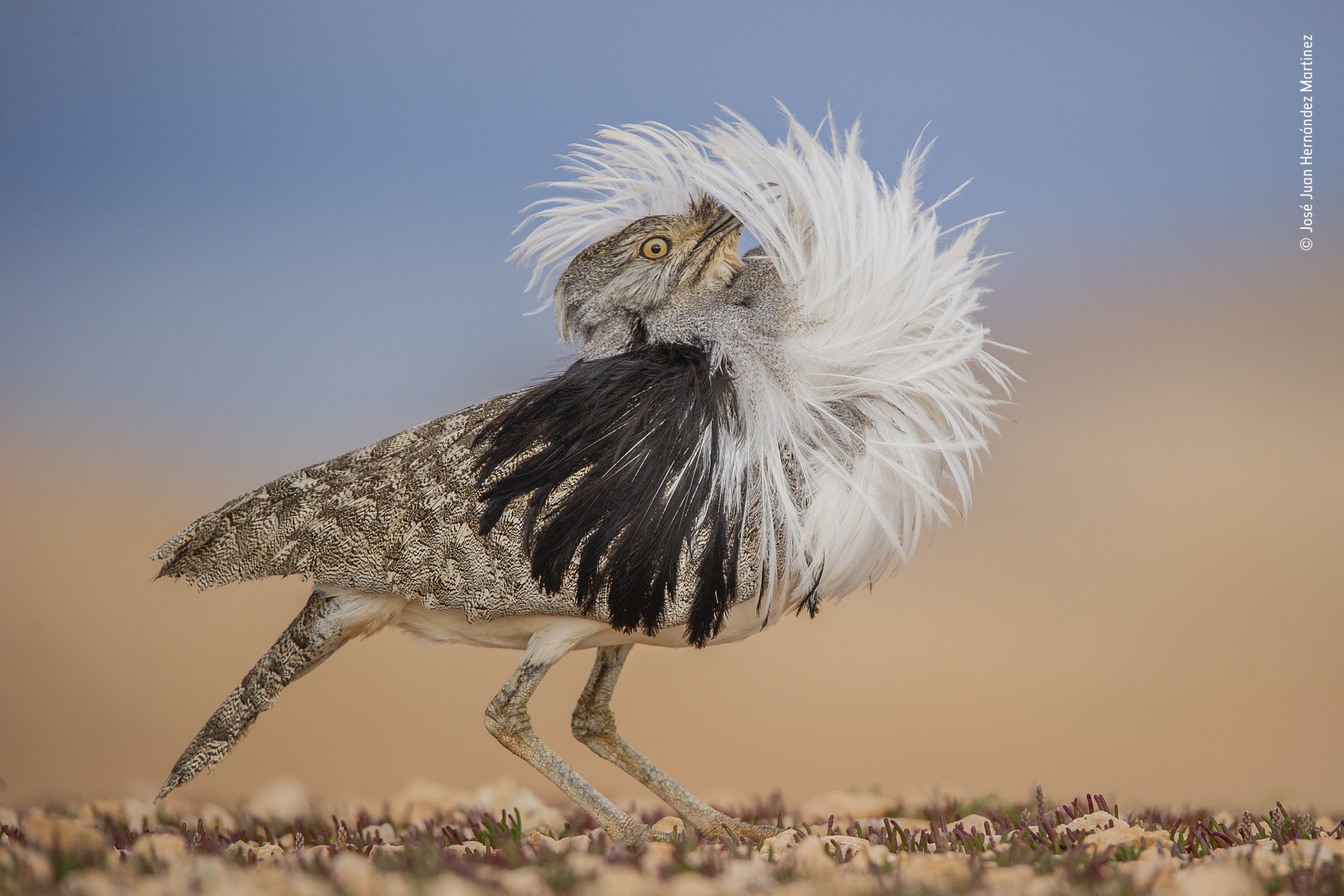
Credit: José Juan Hernández Martinez.
José Juan Hernández Martinez photographed a Canary Islands houbara’s courtship display, in which the bird puffed out its body after a “frenzied performance”. The performance is a flurry of movement, and Martinez captured the bird in a moment of rest, using the light of the moon. The photograph won for “Animal Portraits”.
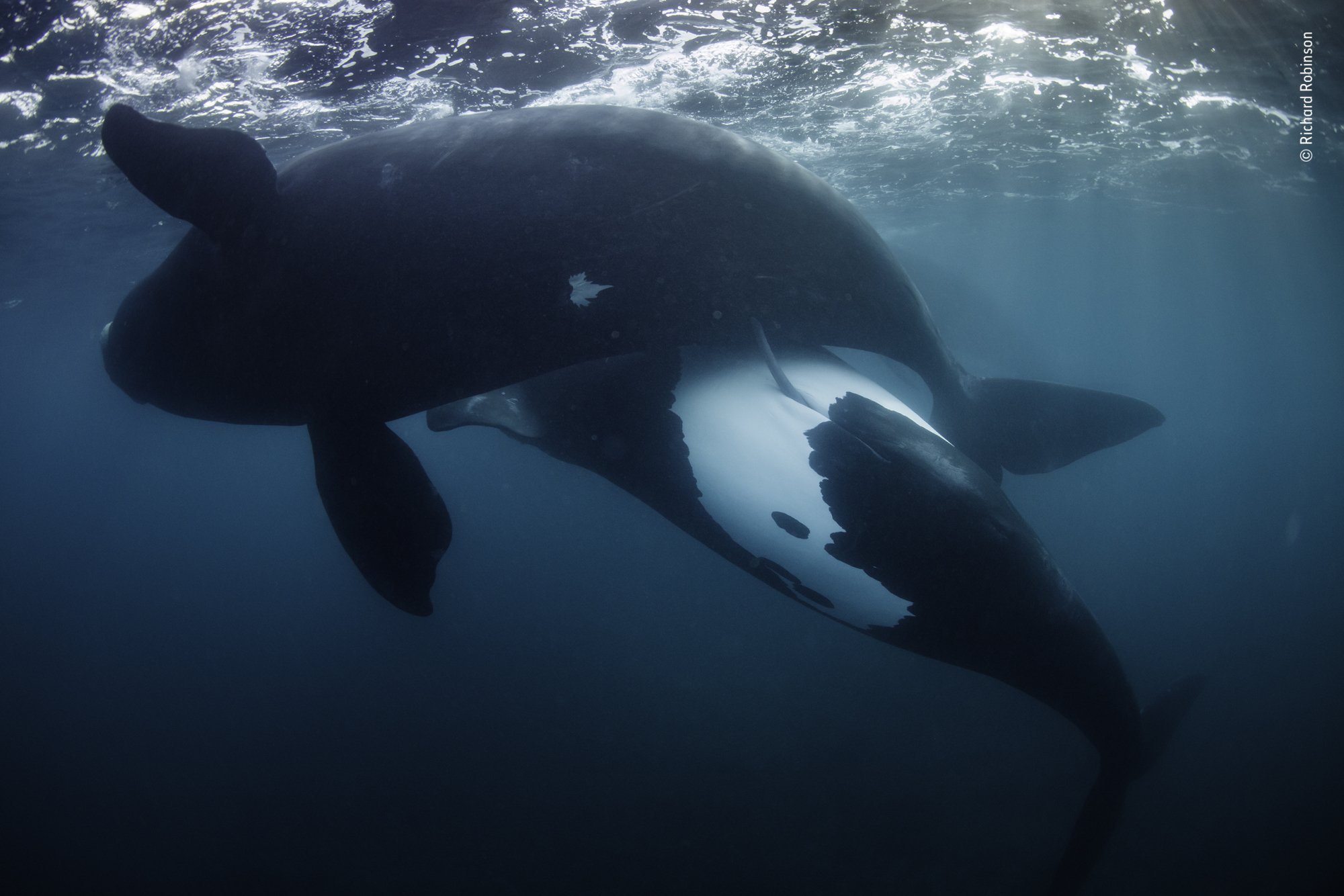
Credit: Richard Robinson.
The tohorā, captured by Richard Robinson, are “a population of whales that has survived against all odds”, according to the caption for the image. Robinson photographed a pair of whales ready to mate, signifying “new hope” for the animals. The image was shot under a New Zealand Department of Conservation permit. For the image, Robinson won in the category “Oceans: The Bigger Picture”.
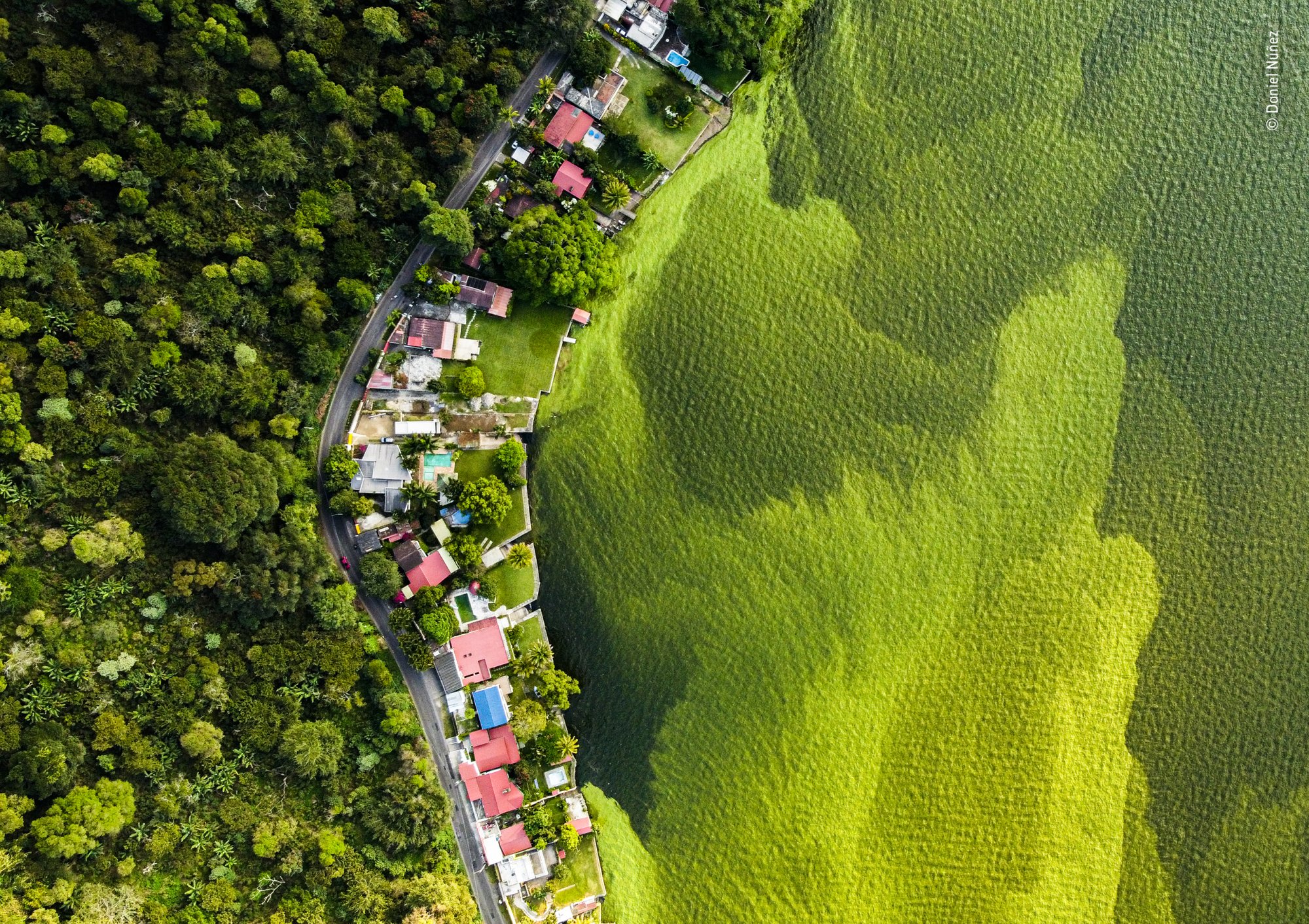
Credit: Daniel Núñez.
Daniel Núñez used a drone to take this vivid image of Lake Amatitlán in Guatemala. The photograph embodies a stark contrast between the forest and the algal growth that has contaminated the lake, which takes “75,000 tonnes of waste from Guatemala City every year”.
“It was a sunny day with perfect conditions,” the photographer said of the moment he got the image, “but it is a sad and shocking moment”.
“Efforts to restore the Amatitlán wetland are underway but have been hampered by a lack of funding and allegations of political corruption,” according to the caption. He won for “Wetlands – The Bigger Picture”.
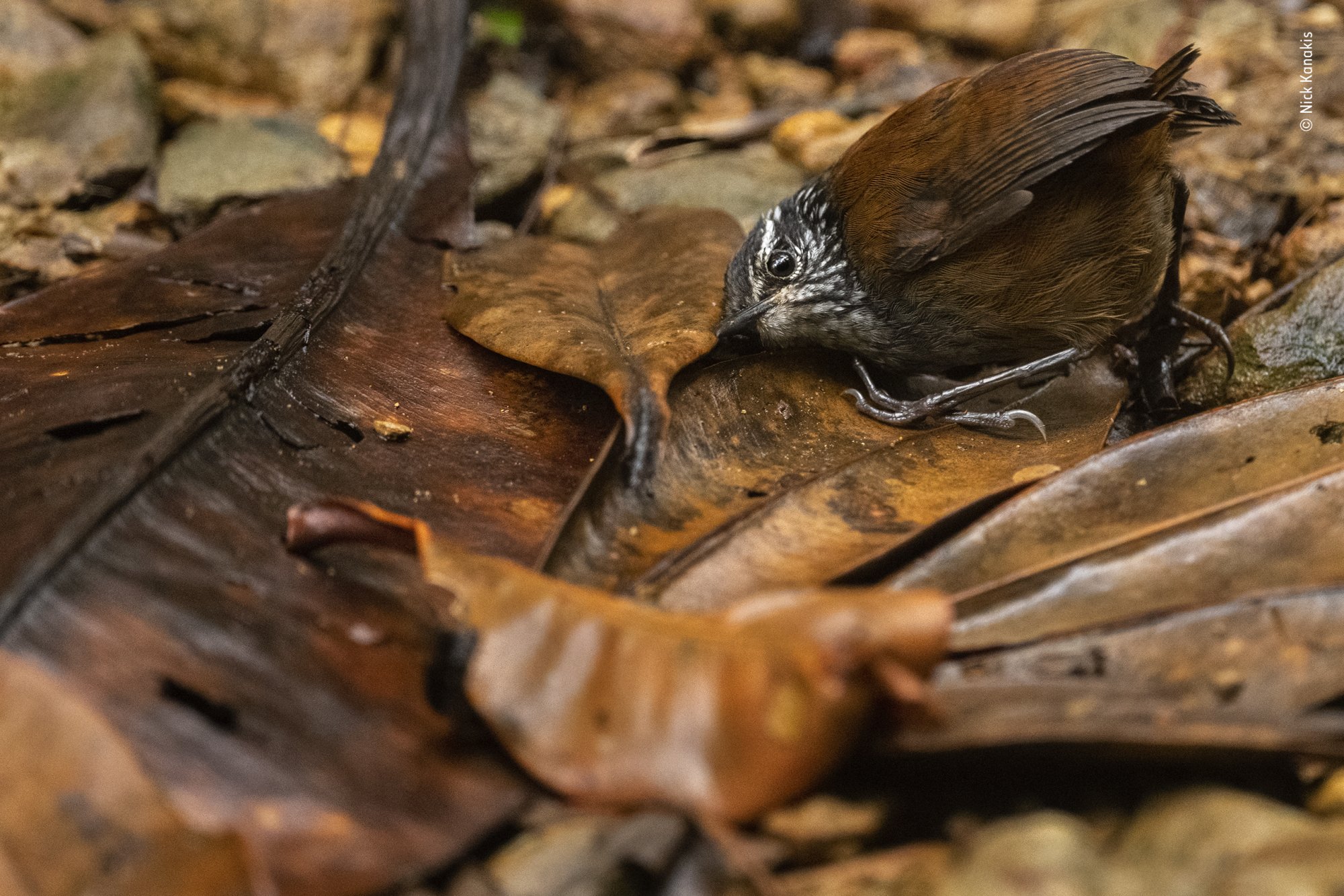
Credit: Nick Kanakis.
In Colombia’s Tatamá National Park, Nick Kanakis caught a grey-breasted wren foraging in a patch of leaf litter. The photograph won for capturing the behaviour of birds. This particular wren was seen “pressing its ear to the ground to listen for small insects”. Kanakis won for capturing the behaviour of birds.
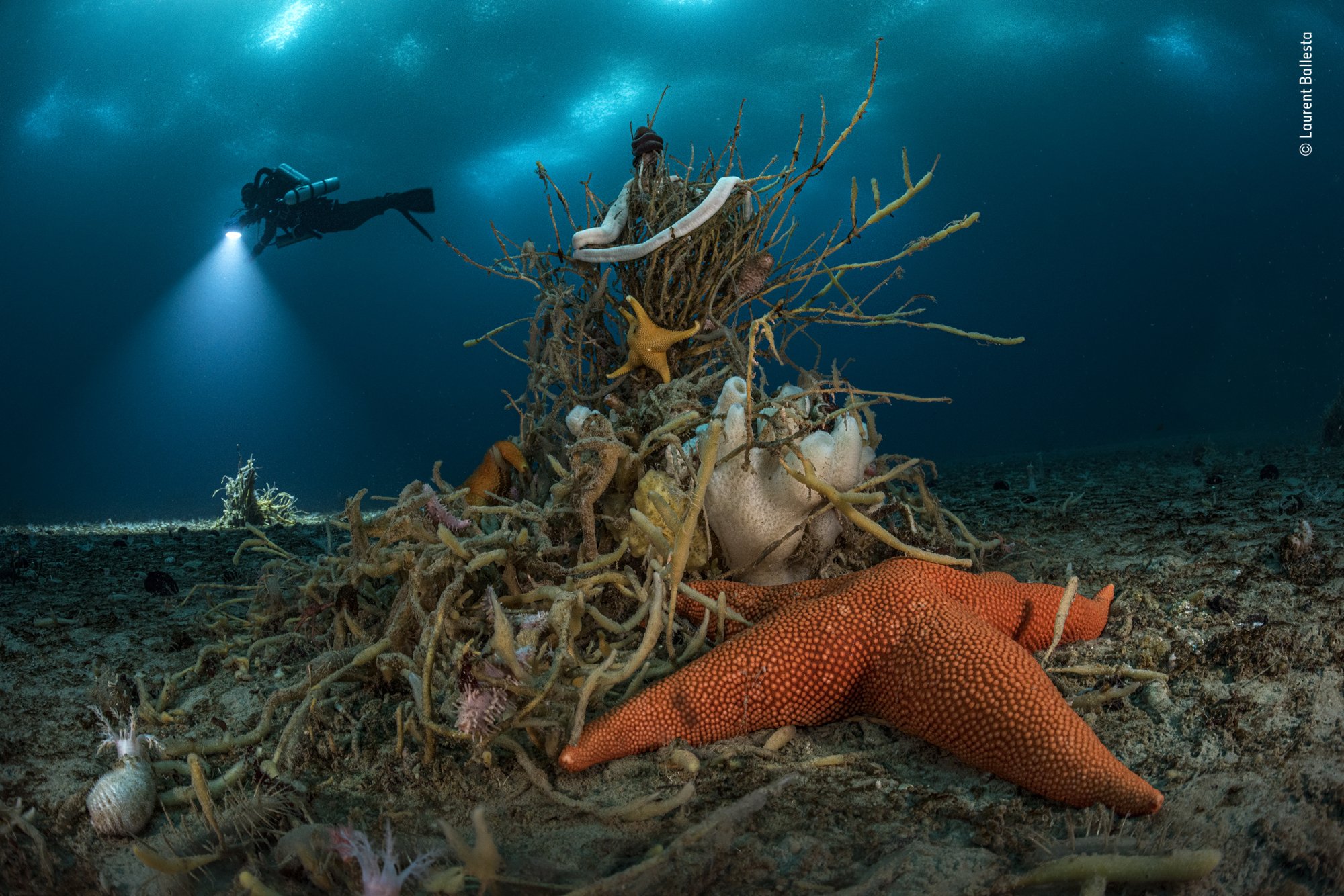
Credit: Laurent Ballesta.
The seabed off of Adélie Land, a territory in Antarctica, sees large batches of sea life. In this image, taken by Laurent Ballesta, a tree-shaped sponge is covered with giant ribbon worms and sea stars. The photograph was taken 32 metres (or 105 feet) under East Antarctic ice, bagging the “Portfolio” award. Ballesta, a biologist in addition to photographer, explored the biodiversity in Antarctica via an expedition that “took two years to plan, a team of expert divers, and specially developed kit”.
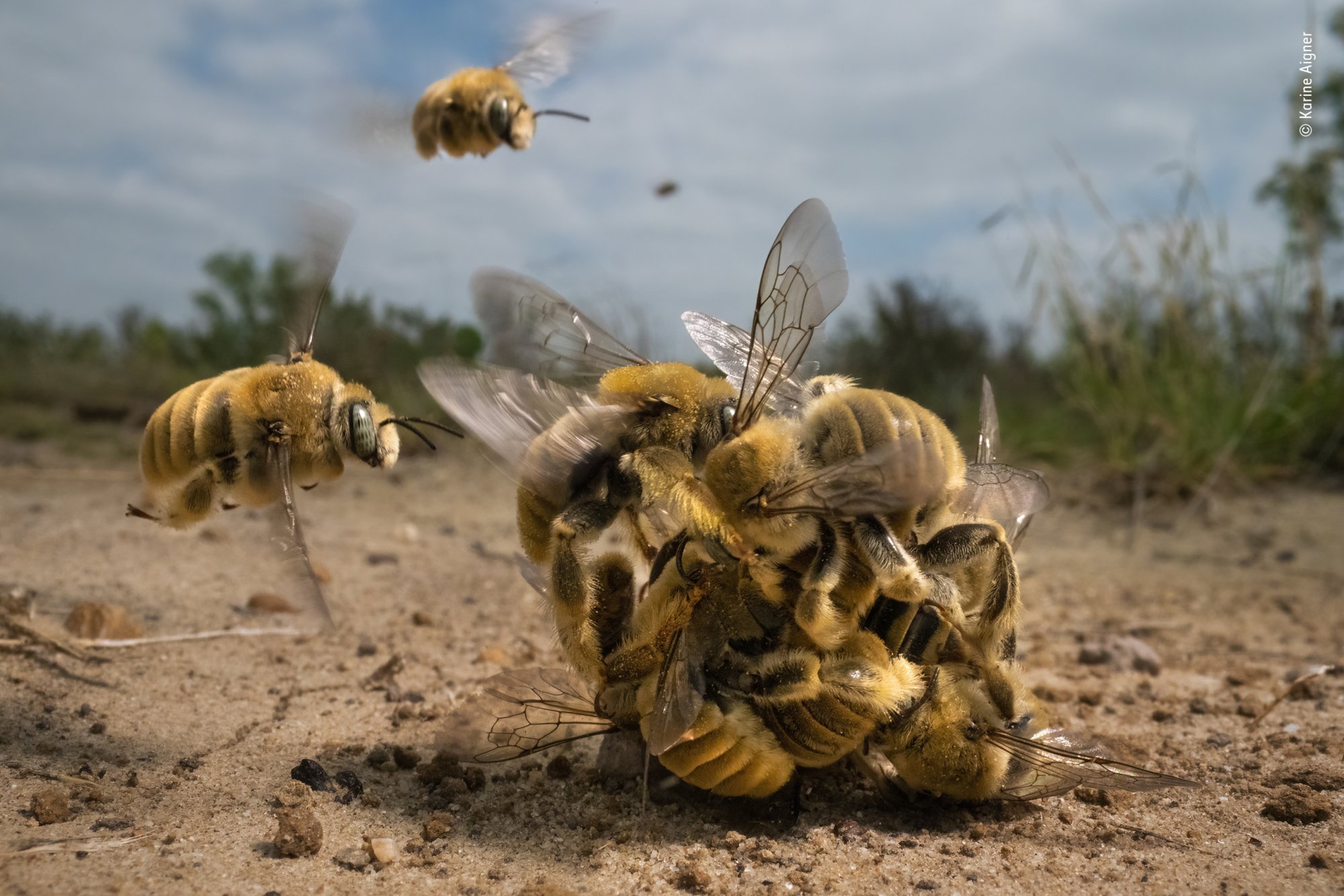
Credit: Karine Aigner.
In South Texas, Karine Aigner used a macro lens to photograph an instance where “a buzzing ball of cactus bees spun over the hot sand”. The dynamic image won under the “behaviour: Invertebrates” category.
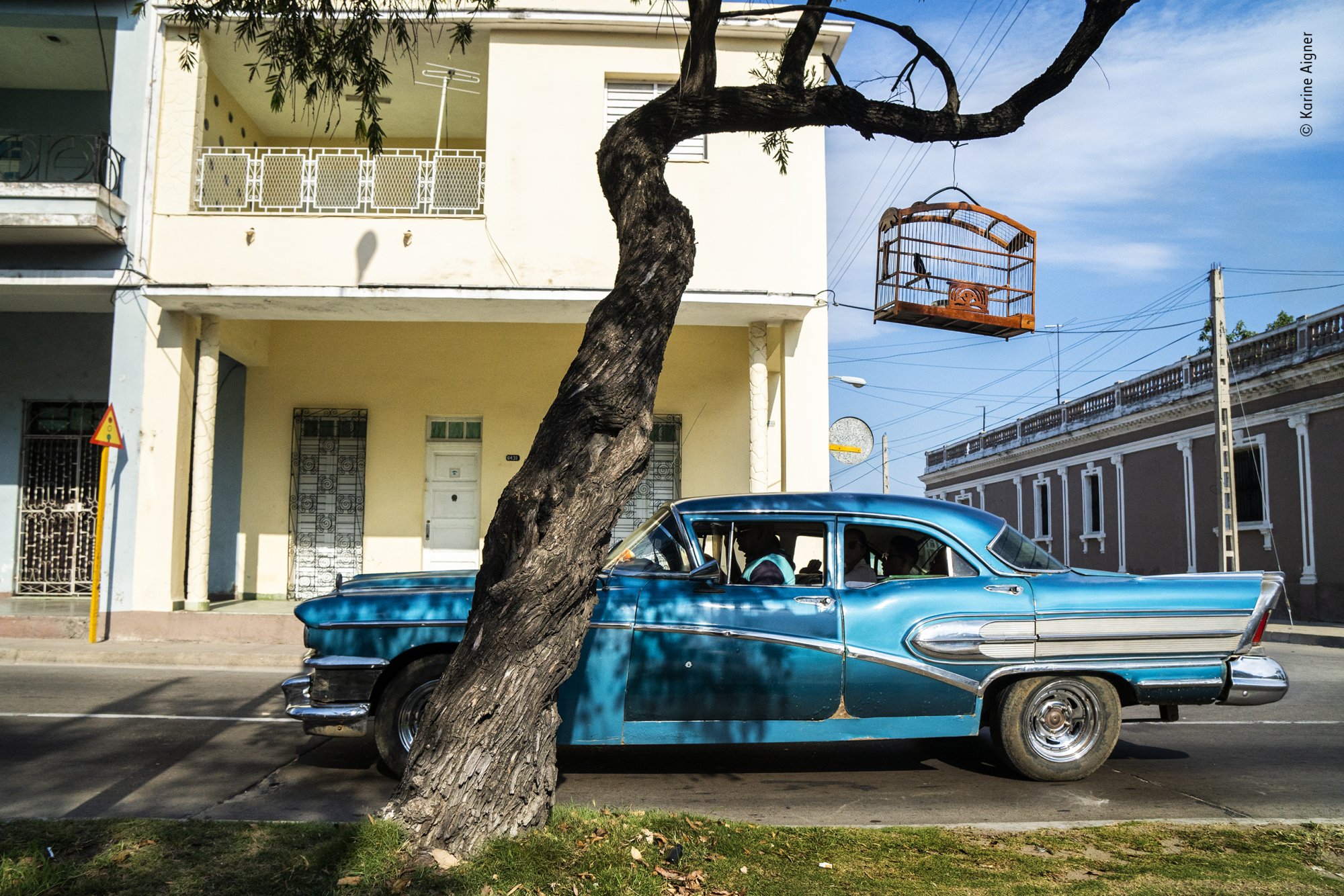
Credit: Karine Aigner.
Aigner also won the “Photojournalist Story Award” for this image of a Cuban bullfinch. The caption reads, “A Cuban bullfinch is positioned alongside a road so that it becomes accustomed to the hubbub of street life and therefore less likely to be distracted during a competition”. The competition being referred to is the long-running Cuban tradition of keeping songbirds for bird-singing contests; the birds “have provided companionship, entertainment and friendly competition within the community.”
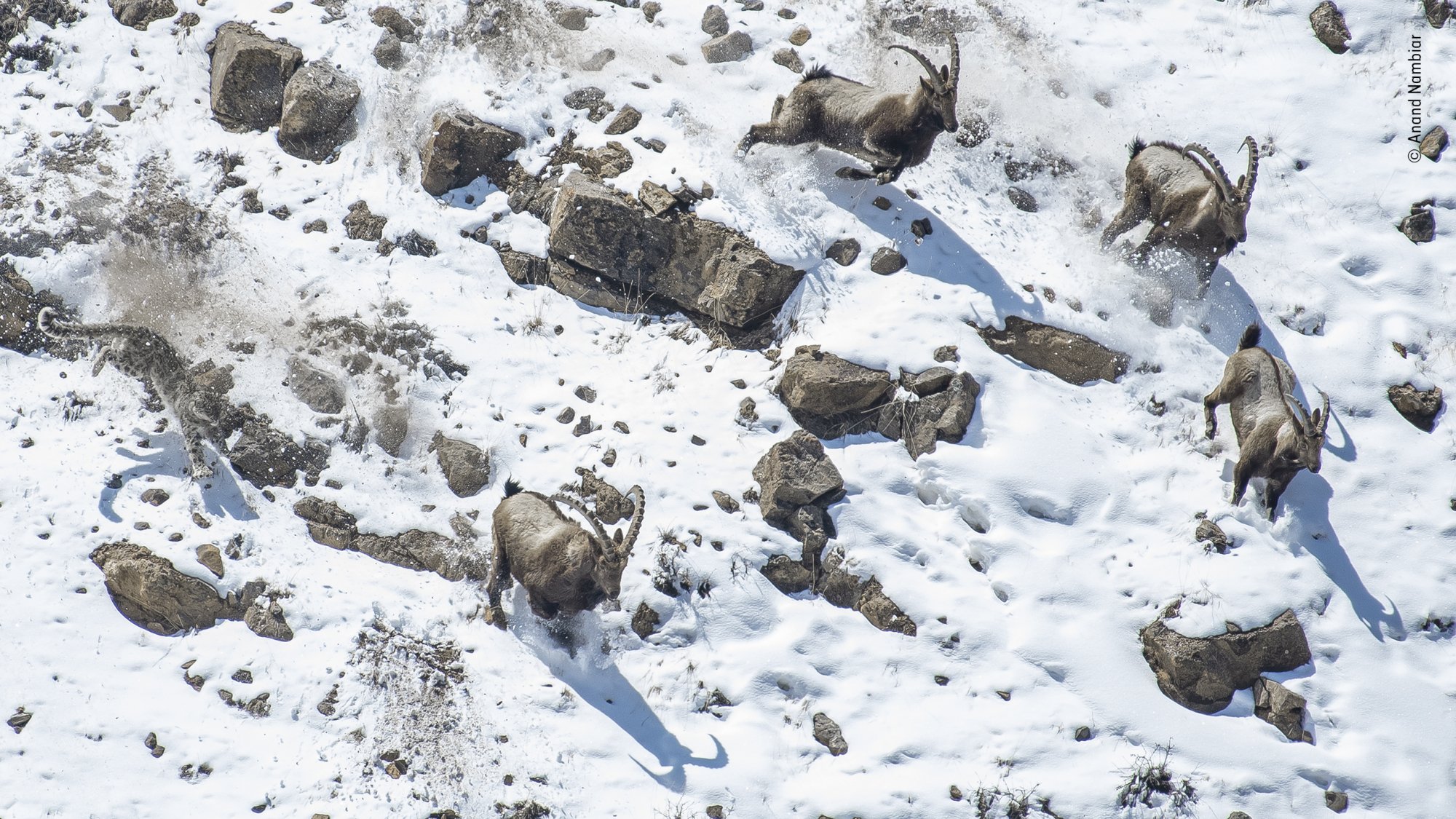
Credit: Anand Nambiar.
In the Kibber Wildlife Sanctuary, situated in Himachal Pradesh, India, a snow leopard is seen charging towards Himalayan ibex, moving closer to the mountain’s steep edge. Anand Nambiar photographed the movement “from a vantage point across the ravine”, winning the “behaviour: mammals” award.
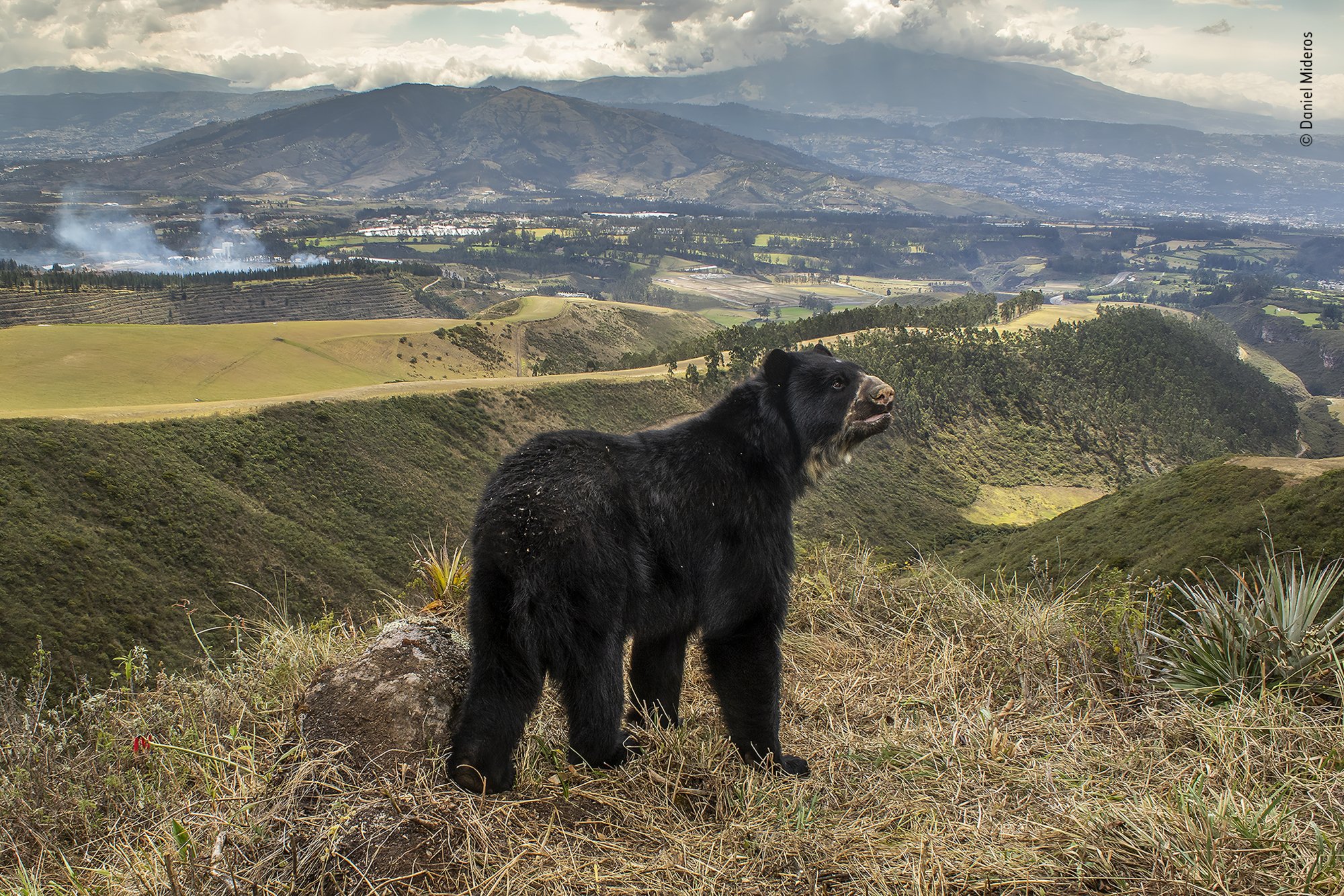
Credit: Daniel Mideros.
Daniel Mideros captured a bear, whose species are often found across western Venezuela to Bolivia, looking across a natural – and disappearing – landscape in Ecuador. The image won for “the animals in their environment” category. Mideros “set up camera traps along a wildlife corridor used to reach high-altitude plateaus”, reads the caption.
Wildlife Photographer of the Year is developed and produced by the Natural History Museum, London. For more information, you can visit the website here.
